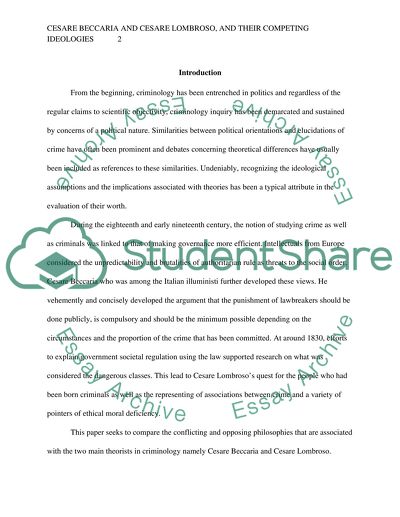Cite this document
(Cesare Beccaria and Cesare Lombroso, and Their Competing Ideologies Coursework, n.d.)
Cesare Beccaria and Cesare Lombroso, and Their Competing Ideologies Coursework. Retrieved from https://studentshare.org/social-science/1661855-criminology-compare-2-key-thinkers-cesare-beccaria-and-cesare-lombroso-and-their-competing-ideologies
Cesare Beccaria and Cesare Lombroso, and Their Competing Ideologies Coursework. Retrieved from https://studentshare.org/social-science/1661855-criminology-compare-2-key-thinkers-cesare-beccaria-and-cesare-lombroso-and-their-competing-ideologies
(Cesare Beccaria and Cesare Lombroso, and Their Competing Ideologies Coursework)
Cesare Beccaria and Cesare Lombroso, and Their Competing Ideologies Coursework. https://studentshare.org/social-science/1661855-criminology-compare-2-key-thinkers-cesare-beccaria-and-cesare-lombroso-and-their-competing-ideologies.
Cesare Beccaria and Cesare Lombroso, and Their Competing Ideologies Coursework. https://studentshare.org/social-science/1661855-criminology-compare-2-key-thinkers-cesare-beccaria-and-cesare-lombroso-and-their-competing-ideologies.
“Cesare Beccaria and Cesare Lombroso, and Their Competing Ideologies Coursework”. https://studentshare.org/social-science/1661855-criminology-compare-2-key-thinkers-cesare-beccaria-and-cesare-lombroso-and-their-competing-ideologies.


